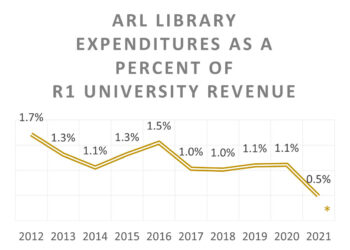As a follow-up to the chef’s best books read during 2016, I’m happy to present a selection of our favorite university press reads of 2016 (and thanks to one of our commenters for the suggestion!). We tend to think of university presses as focused primarily on humanities and social science (dare I say esoteric?) monographs and to be sure, a critical part of our mission is to support scholarship from less-funded, smaller and emerging fields. But every year new university press publications also include blockbusters (think Thomas Piketty), innovative fiction and poetry, important critiques that shape the public sphere and regional publishing gems. Read on to see some of our favorites from 2016!
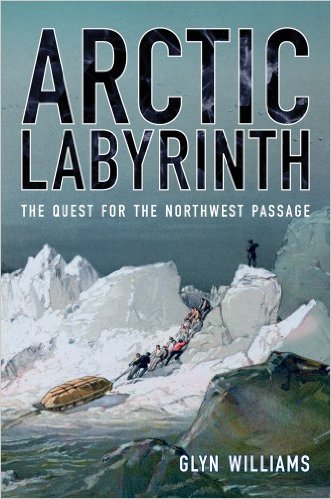 Charlie Rapple: I’m not sure how my fascination with cold places started. It was either travelling in Iceland, or reading Sara Wheeler’s Terra Incognita, both of which I did in my early twenties. Ever since, I’ve sought out and devoured both fictional and non-fictional insights into life in a cold climate (think Miss Smilla’s Feeling for Snow or The Shipping News; indeed, it may all have started with Laura Ingalls Wilder’s stories of pioneer winters). Hence I came to read Arctic Labyrinth by Glyn Williams, published by the University of California Press. Williams brings together in one neat narrative years’ and years’ worth of expeditions to find the Northwest Passage. The book is academic in tone and the research it represents is deep and detailed, but the stories leap off the page nonetheless – here are a few that have stayed with me:
Charlie Rapple: I’m not sure how my fascination with cold places started. It was either travelling in Iceland, or reading Sara Wheeler’s Terra Incognita, both of which I did in my early twenties. Ever since, I’ve sought out and devoured both fictional and non-fictional insights into life in a cold climate (think Miss Smilla’s Feeling for Snow or The Shipping News; indeed, it may all have started with Laura Ingalls Wilder’s stories of pioneer winters). Hence I came to read Arctic Labyrinth by Glyn Williams, published by the University of California Press. Williams brings together in one neat narrative years’ and years’ worth of expeditions to find the Northwest Passage. The book is academic in tone and the research it represents is deep and detailed, but the stories leap off the page nonetheless – here are a few that have stayed with me:
- Explorations of the Northwest Passage began at the turn of the 16th century — long before the glory days of the Elizabethan mariners even, people were setting out into this unknown and incomprehensibly inhospitable climate, almost comically ill-equipped in terms of everything from footwear to clothing to food to the ships themselves. Given that five hundred years later, cold-weather expeditions still suffer occasional fatalities because of the harshness of the conditions, I found myself shaking my head in wide-eyed awe trying to imagine the experiences of John Cabot’s crew. Throughout the book this sense of wonder at extraordinary exploits prevails: crews have to scuttle ships during the winter, so that they would survive underwater, rather than be crushed by ice — how on earth do you re-float a scuttled ship in Arctic conditions in the middle of the 17th century? But they did. Just as they carved through the ice with saws to advance ships by a handful of feet each day, or endured winter-long camps in sub-freezing darkness, or made monstrously long treks in desperate hope first of discovery and then finally of survival.
- Given the subject matter, very few women merit a mention (though the persistence of Lady Jane Franklin, whose husband was lost during his fourth Arctic expedition, is poignantly documented), but I find my thoughts returning again and again to the scant mention of Kitty Smith, the first white woman to spend a winter in Hudson Bay (her husband captained an expedition in 1745-46). Much general detail is given about the hardships endured by those who wintered in the Arctic; it seems survival was contingent on, firstly, undertaking relatively strenuous physical activity (a fact not discovered for some time — early crews suffered greatly from misguided ideas of hunkering down) and, secondly, camaraderie among the crew. What on earth must the experience have been like for a mid-eighteenth-century woman, likely not encouraged to participate in either? I doubt there is much primary evidence but oh, what a story there could be around Kitty Smith’s adventures.
- Franklin’s lost ship (HMS Terror) was only discovered in September 2016 (when I was midway through the book, which was published in 2011) — so the reader is left uncertain as to whether the Northwest Passage had been discovered during that fateful expedition of 1845-48. This continued uncertainty evokes for the reader what it must have been like to be back at home, waiting for occasional updates as to an expedition’s progress. It is fascinating to learn how those on the expeditions communicated, from letters sent home via merchant seamen, to diaries brought back from voyages (or discovered in abandoned vessels/camps), to the notices left in cairns to advise on routes taken, discoveries made, crew lost. Williams does not spare the reader the grim tragedy of the Franklin expedition which was uncovered through a combination of letters, diaries, cairns, oral (Inuit) history and archaeology; to summarize, the crews ended up having to abandon their ships to the ice and spent months or (in some cases) years surviving in the Arctic wilderness; some survivors ultimately resorted to cannibalism. Though some graves have been found over the years, no one knows where Franklin himself is buried. The final position of his ships, the data discovered from them, and the other evidence that has materialized over the years suggests that he and his crews had not, in the end, discovered the passage. For all its fascinating insights, the book is overall a sobering reminder of how much was invested, and how many lives were lost, in an endeavor that was driven at best (?) by commercial optimism, at worst by national pride, and at its most galling, by malignant fabrication. The northwest passage may exist, but is so rarely navigable that it has made no real difference – unless you count the fact that cruise passengers can now complete the transit, which does not seem an achievement worthy of the extraordinary efforts of Cabot, McClure, Rae, Ross, Franklin, and all the other expedition captains and crews.
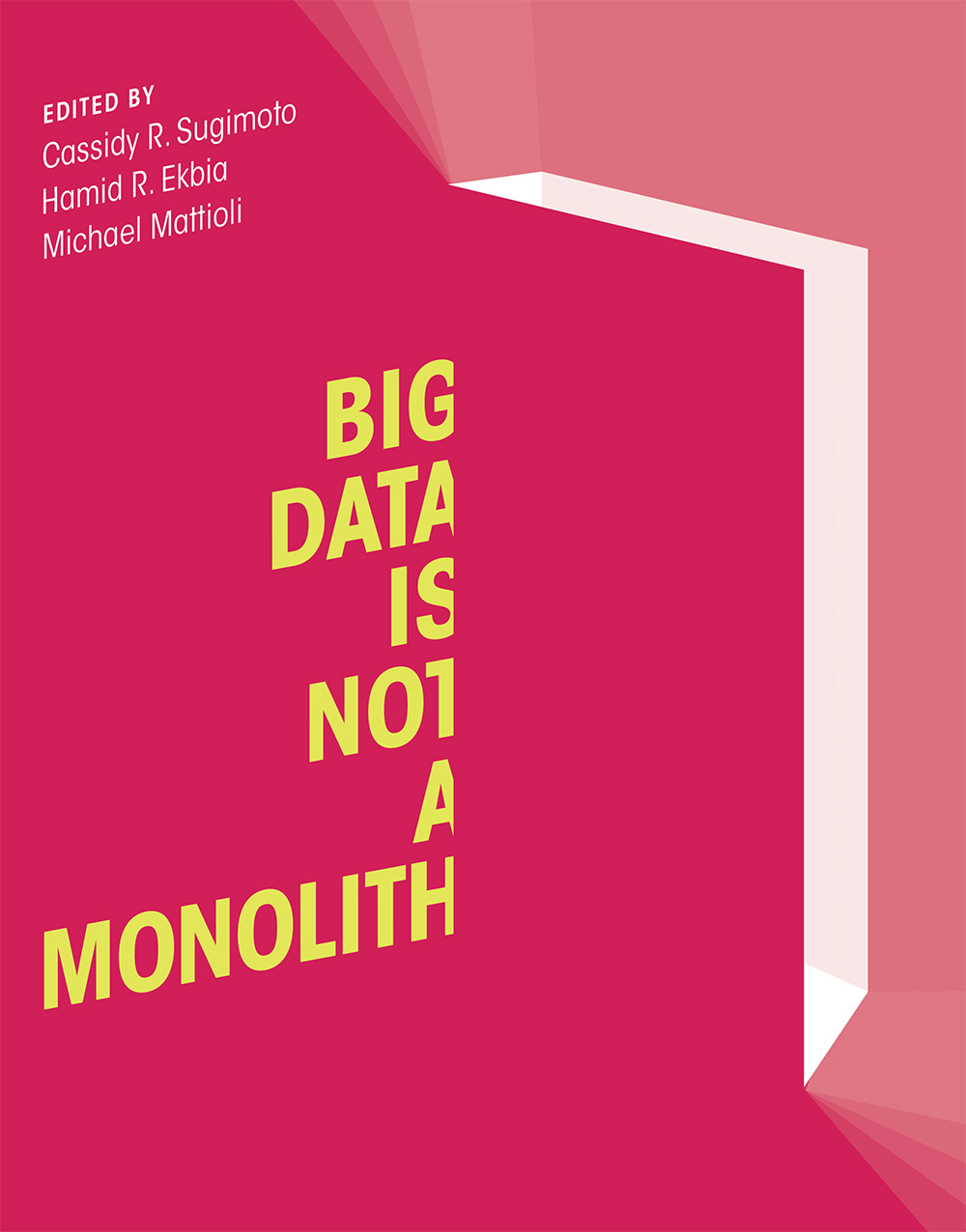 Kent Anderson: The university press book I decided to review is one I contributed to, so this is a volume I’ve known about for a while — Big Data Is Not a Monolith, from MIT Press, edited by Cassidy Sugimoto, Hamid Ekbia, and Michael Mattiolo. As a contributor, I had limited exposure to the entire work before publication, so seeing the book in final form was a revelation, and a happy one. The book is interesting and informative, with intriguing tidbits about how big data is being used to shape everything from Uber rides to public policy, and grander philosophical questions about the webs of data that could entangle us all, the value of theory in a world of all-encompassing data, and the relevance of small data. The writing is very good given the number of contributors and a variety of voices that had to be edited into a consistent fabric, and the subject is definitely worth visiting and revisiting. The book is divided into three sections: Big Data and Society, Big Data and Science, and Big Data and Organizations. From stewardship to downsides to vast potential, many scenarios are explored carefully and thoughtfully. If you want a primer on big data, the big questions it raises, and the big potential it holds, this slim volume (approx. 220 pages plus references and, thank heavens, a very good index) might do the trick.
Kent Anderson: The university press book I decided to review is one I contributed to, so this is a volume I’ve known about for a while — Big Data Is Not a Monolith, from MIT Press, edited by Cassidy Sugimoto, Hamid Ekbia, and Michael Mattiolo. As a contributor, I had limited exposure to the entire work before publication, so seeing the book in final form was a revelation, and a happy one. The book is interesting and informative, with intriguing tidbits about how big data is being used to shape everything from Uber rides to public policy, and grander philosophical questions about the webs of data that could entangle us all, the value of theory in a world of all-encompassing data, and the relevance of small data. The writing is very good given the number of contributors and a variety of voices that had to be edited into a consistent fabric, and the subject is definitely worth visiting and revisiting. The book is divided into three sections: Big Data and Society, Big Data and Science, and Big Data and Organizations. From stewardship to downsides to vast potential, many scenarios are explored carefully and thoughtfully. If you want a primer on big data, the big questions it raises, and the big potential it holds, this slim volume (approx. 220 pages plus references and, thank heavens, a very good index) might do the trick.
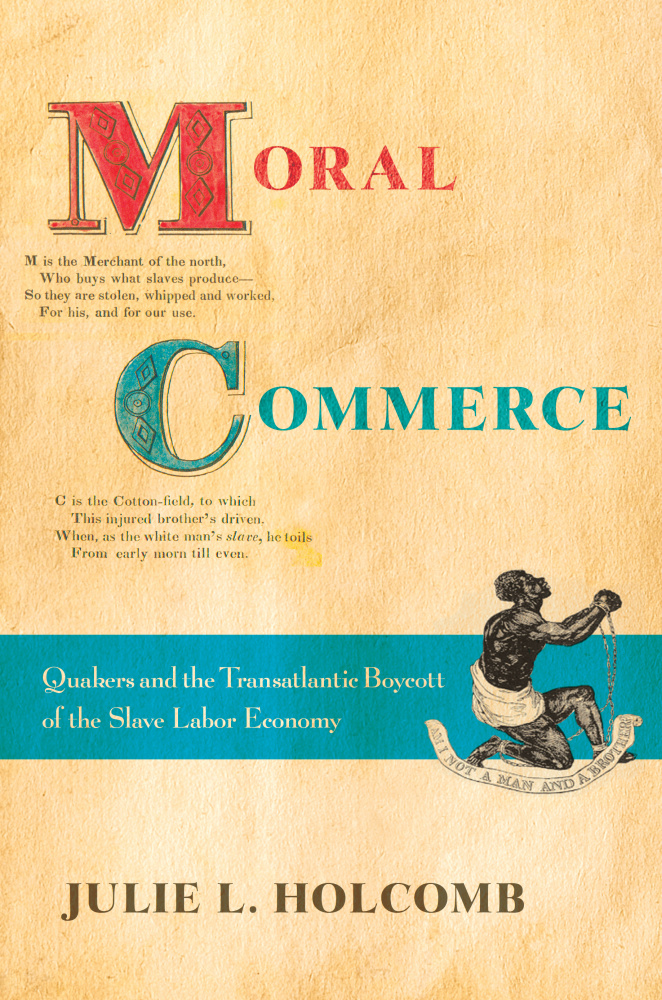 Karin Wulf: This is a great feature! But how to pick just one 2016 university press book? Between teaching, research, and the publishing program at the Omohundro Institute I read a lot of books newly published by university presses. Among those I’ve picked up in the last months are Maria Argen (ed.), Making a Living, Making a Difference: Gender and Work in Early Modern European Society (Oxford University Press, 2016), and Richard Rabinowitz’s Curating America: Journeys Through Storyscapes of the American Past (University of North Carolina Press, 2016). A book that’s gripped my attention and that my graduate seminar will read in the spring is Marisa Fuentes’ Dispossessed Lives: Enslaved Women, Violence, and the Archive (University of Pennsylvania Press, 2016). If you don’t think writing and reading about history is urgent political business, any one of these will, in different ways, change your mind.
Karin Wulf: This is a great feature! But how to pick just one 2016 university press book? Between teaching, research, and the publishing program at the Omohundro Institute I read a lot of books newly published by university presses. Among those I’ve picked up in the last months are Maria Argen (ed.), Making a Living, Making a Difference: Gender and Work in Early Modern European Society (Oxford University Press, 2016), and Richard Rabinowitz’s Curating America: Journeys Through Storyscapes of the American Past (University of North Carolina Press, 2016). A book that’s gripped my attention and that my graduate seminar will read in the spring is Marisa Fuentes’ Dispossessed Lives: Enslaved Women, Violence, and the Archive (University of Pennsylvania Press, 2016). If you don’t think writing and reading about history is urgent political business, any one of these will, in different ways, change your mind.
But I’ve picked something just around the corner from my field to highlight: Moral Commerce: Quakers and the Transatlantic Boycott of the Slave Labor Economy (Cornell University Press, 2016) by Julie Holcomb. Holcomb looks at the how concerns about ethical consumer behavior animated abolitionists, leading them to boycott sugar, cotton, and other commodities cultivated or processed with unfree labor. She explores the extent, character and impact of the free produce movement beginning with eighteenth-century efforts to articulate the connection between slavery and goods as fruit of a poisonous tree and into the more elaborate nineteenth-century free produce movement that included merchants and storefronts. Quakers argued that among the many immoral aspects of slavery was the theft of a person’s labor, and thus sugar and cotton were illicit goods. A key part of Holcomb’s book is the work of black activists in pushing boycotts as a radical form of abolitionist protest.
The political salience of nineteenth-century America hasn’t been lost on other writers. Rebecca Onion and others have pointed to the abolitionists as models for political insurgency. Another historian of abolitionism, Manisha Sinha, author of The Slaves’ Cause: A History of Abolition (Yale University Press, 2016) recalled that the fall of 2016 feels like “The fall of Reconstruction.” Holcomb’s Moral Commerce adds a reminder that questioning the ethical implications of our consumption patterns also has a recent and relevant history.
Holcomb was interviewed on the LA Review of Books channel Marginalia; as well as the podcast, which I recommend.
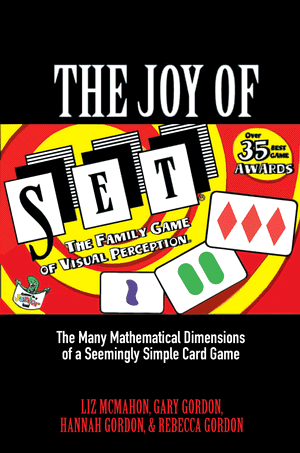 Robert Harington: This is the time when jigsaw puzzles take up your dining room table, hoping that your dog will not eat the one, or two puzzle pieces you actually need, and it is a time when families to turn to board games to pass the time away. A classic game that is completely addictive be you a kindergartner, or mathematician, is the game of SET. It is a card game, one that has been around for quite a long time now – since 1974. There are eighty-one cards consisting of one, two, or three symbols of different shapes (diamond, oval, squiggle), shadings (solid, striped, open), and colors (green, purple, red). In order to win, players must identify “SETs” of three cards with each of these 4 attributes either being all the same or one of each. For example, one attribute is color – then your three cards must all be the same color, or be one of each color (one red, one purple, one green). It sounds simple, but keeping track of all the various combinations as you are looking at 12 cards placed on a table with your friends all itching to shout “SET” is hard and stressful – in that addictive way.
Robert Harington: This is the time when jigsaw puzzles take up your dining room table, hoping that your dog will not eat the one, or two puzzle pieces you actually need, and it is a time when families to turn to board games to pass the time away. A classic game that is completely addictive be you a kindergartner, or mathematician, is the game of SET. It is a card game, one that has been around for quite a long time now – since 1974. There are eighty-one cards consisting of one, two, or three symbols of different shapes (diamond, oval, squiggle), shadings (solid, striped, open), and colors (green, purple, red). In order to win, players must identify “SETs” of three cards with each of these 4 attributes either being all the same or one of each. For example, one attribute is color – then your three cards must all be the same color, or be one of each color (one red, one purple, one green). It sounds simple, but keeping track of all the various combinations as you are looking at 12 cards placed on a table with your friends all itching to shout “SET” is hard and stressful – in that addictive way.
The Joy of Set (Liz McMahon, Gary Gordon, Hannah Gordon and Rebecca Gordon, from Princeton University Press) takes readers on a fascinating journey into this seemingly simple card game. So why is it so enjoyable? The authors are quite clearly fans of SET. They are a family of husband, wife and two daughters and have been playing the game for twenty years. Three out of the four of the authors also happen to mathematicians, and the other daughter is a “grandmaster” of SET. What they have done is to share their excitement for the game and for its connections to math. There are threads of geometry, abstract algebra, linear algebra and combinatorics that all bear on this game. Pedagogically, this game is an elegant way to introduce these math concepts to students. The first half of the book is really written for anyone, and then if you want a little deeper brain activity the second half has enough complexity to feed even a professional mathematician’s curiosity.
Let’s look at some of the mathematical questions you can ask about SET. One obvious question you may ask is “How many SETs are there?” Or you could ask, “What percentage of SETs differ in all their four features?” There is a perhaps surprising link to geometry. The word “geometry,” means earth or land measure – from the Greek. In math you are really talking about insights into shapes and the nature of space and also more broadly with visual phenomena. Geometry is not finite, meaning that there are an infinite number of points on a line. As an example look at stick of thin spaghetti. You can keep cutting the spaghetti into smaller and smaller pieces — infinite pieces — suggesting that there are infinitely many points that make up the line segment, or spaghetti stick. There is also a branch of geometry called finite geometry. When you play SET, as the authors say “…you have cloned three ancient scholars, Socrates, Euclid, and Theano, who are now in your home discussing geometry.” SET is related to geometry in this finite sense, where you can look at each card as a point, and the SETS as lines.
So you get the idea – this game is deep, and it just happens to be both simple and excruciatingly hard to play as well. The book is in my view just the right way to talk about math as fun, and intellectually challenging. To enjoy math you do not have to be a genius – it is just another way of experiencing the world more fully.
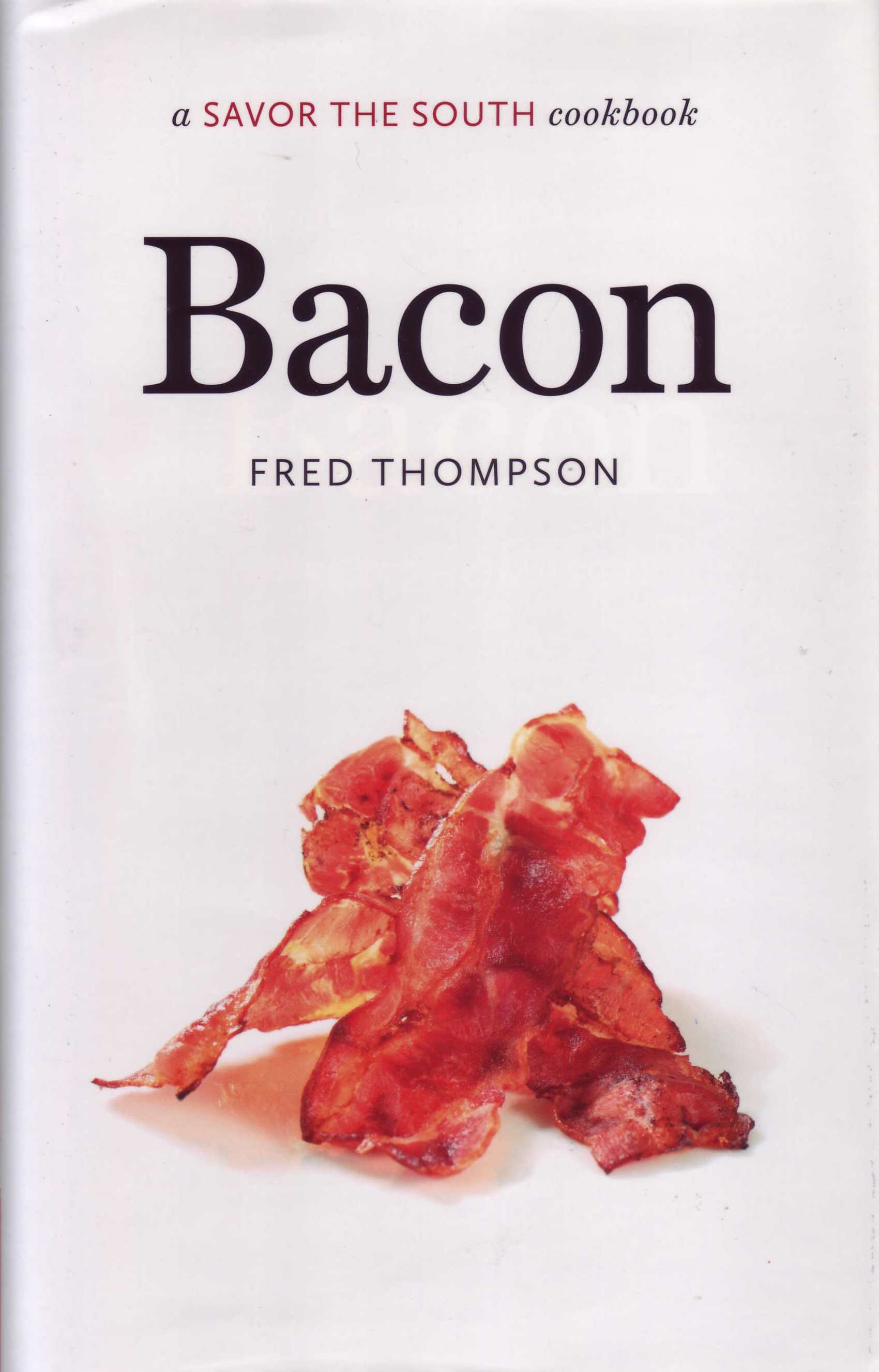 Alison Mudditt: A dinner at the Charleston conference in 2015 highlighted all that I’ve always struggled with in southern cooking: our dinner rolls had been deep fried in bacon fat. What’s wrong with that, I hear you say, but even for a lover of just about any kind of salted pig such as myself this seemed a step too far. Nonetheless, I was delighted to discover Bacon by Fred Thompson in the University of North Carolina Press’s Savor the South series. In addition to many fabulous recipes (salted caramel bacon brownies, anyone?), the author provides a fascinating summary of bacon’s place in southern cuisine along with everything you’ll ever need to know about bacon. And it’s just one of an amazing array of regional titles published by university presses, large and small.
Alison Mudditt: A dinner at the Charleston conference in 2015 highlighted all that I’ve always struggled with in southern cooking: our dinner rolls had been deep fried in bacon fat. What’s wrong with that, I hear you say, but even for a lover of just about any kind of salted pig such as myself this seemed a step too far. Nonetheless, I was delighted to discover Bacon by Fred Thompson in the University of North Carolina Press’s Savor the South series. In addition to many fabulous recipes (salted caramel bacon brownies, anyone?), the author provides a fascinating summary of bacon’s place in southern cuisine along with everything you’ll ever need to know about bacon. And it’s just one of an amazing array of regional titles published by university presses, large and small.
 Speaking of which, I must also mention the gorgeous and compelling Ice Bear: The Cultural History of an Arctic Icon from the University of Washington Press. Like Charlie, I’ve always been fascinated with the Arctic and my childhood bedroom was adorned with pictures of polar bears – making this book impossible to resist. Beautifully illustrated with photographs and paintings, Michael Engelhard tells the cultural history of the polar bear through myth, legend and other stories. The author is both a trained cultural anthropologist and a wilderness guide in the Arctic National Wildlife refuge, and he weaves together these perspectives in a moving exploration of our complex relationship with this iconic bear. At a time when the threat of climate change for this species is so very real, it is also a grim reminder of the ways in which human and natural history have grown so far out of kilter.
Speaking of which, I must also mention the gorgeous and compelling Ice Bear: The Cultural History of an Arctic Icon from the University of Washington Press. Like Charlie, I’ve always been fascinated with the Arctic and my childhood bedroom was adorned with pictures of polar bears – making this book impossible to resist. Beautifully illustrated with photographs and paintings, Michael Engelhard tells the cultural history of the polar bear through myth, legend and other stories. The author is both a trained cultural anthropologist and a wilderness guide in the Arctic National Wildlife refuge, and he weaves together these perspectives in a moving exploration of our complex relationship with this iconic bear. At a time when the threat of climate change for this species is so very real, it is also a grim reminder of the ways in which human and natural history have grown so far out of kilter.
Discussion
5 Thoughts on "University Press Books We Loved in 2016"
Ooh, I love this topic. There are some super interesting-looking titles on this list. I’m going to explore the catalogs of some more close-to-home university presses to see if there are any other works I ought to add to my to-read list.
I would recommend Lost Wax by Jericho Parms, a true to life collection of essays, elegant in style and structure, thought provoking and honest. Creative non-fiction at its finest.
Great stuff, Charlie; I was on a latent hunt for something like that! I spent the latter part of 2016 binging on similar ‘age of exploration’ literature, but focused on the opposite pole — with Robert Scott’s Journals (OUP) presenting a particularly gripping account of his last expedition.
However, a different, non-UP title struck me the most: The Lost Photographs of Captain Scott (Little, Brown). Of course, as one would expect, it’s full of amazing photos from the expedition. Unexpectedly, though, it also presents Scott’s expedition as a landmark research endeavour in which photography was first used as means of scientific communication on an unprecedented scale, and with notable results. Essentially, it tells the story of Scott’s last expedition in the context of an often overlooked, but incredibly significant revolution in scientific communication.
An absolute must-read really.
I believe I suggested this in the comments section of another post, so great to actually see it, and the Kitchen suggestions are intriguing. I’ll make a suggestion and cheat somewhat by picking a late 2015 book, Ian Bogost’s “How to Talk about Video Games,” from the University of Minnesota Press. Much like how technological changes have shifted how we can consider a book or journal in the digital sphere, Bogost considers the interstitial nature of video games–as between appliances and art–as necessitating a discussion about how to define and discuss them. He never gets too bogged down and uses varied, pertinent examples, so I’d argue the book has an appeal beyond just those interested in media studies.
Thank you for this! I’ve added almost all of these to my to-read list.

